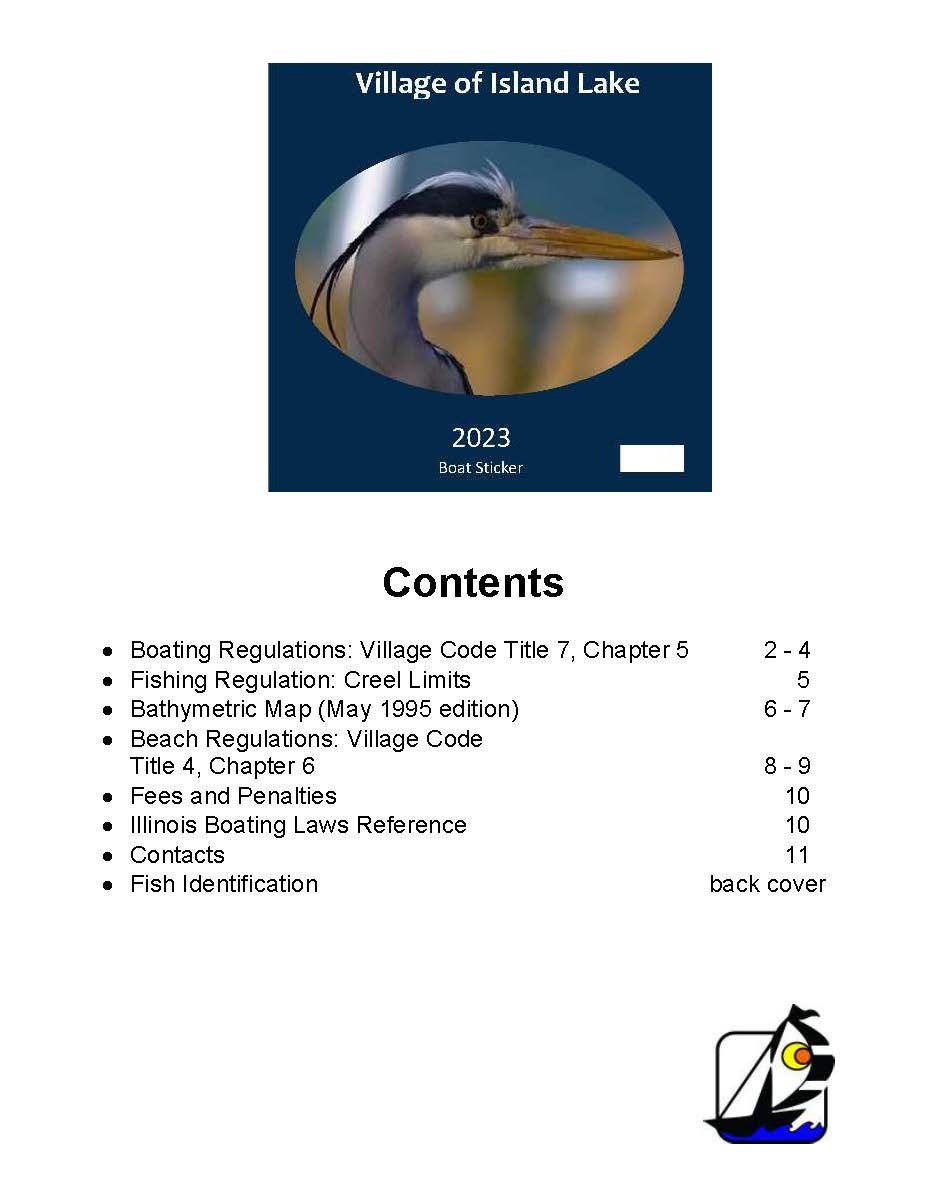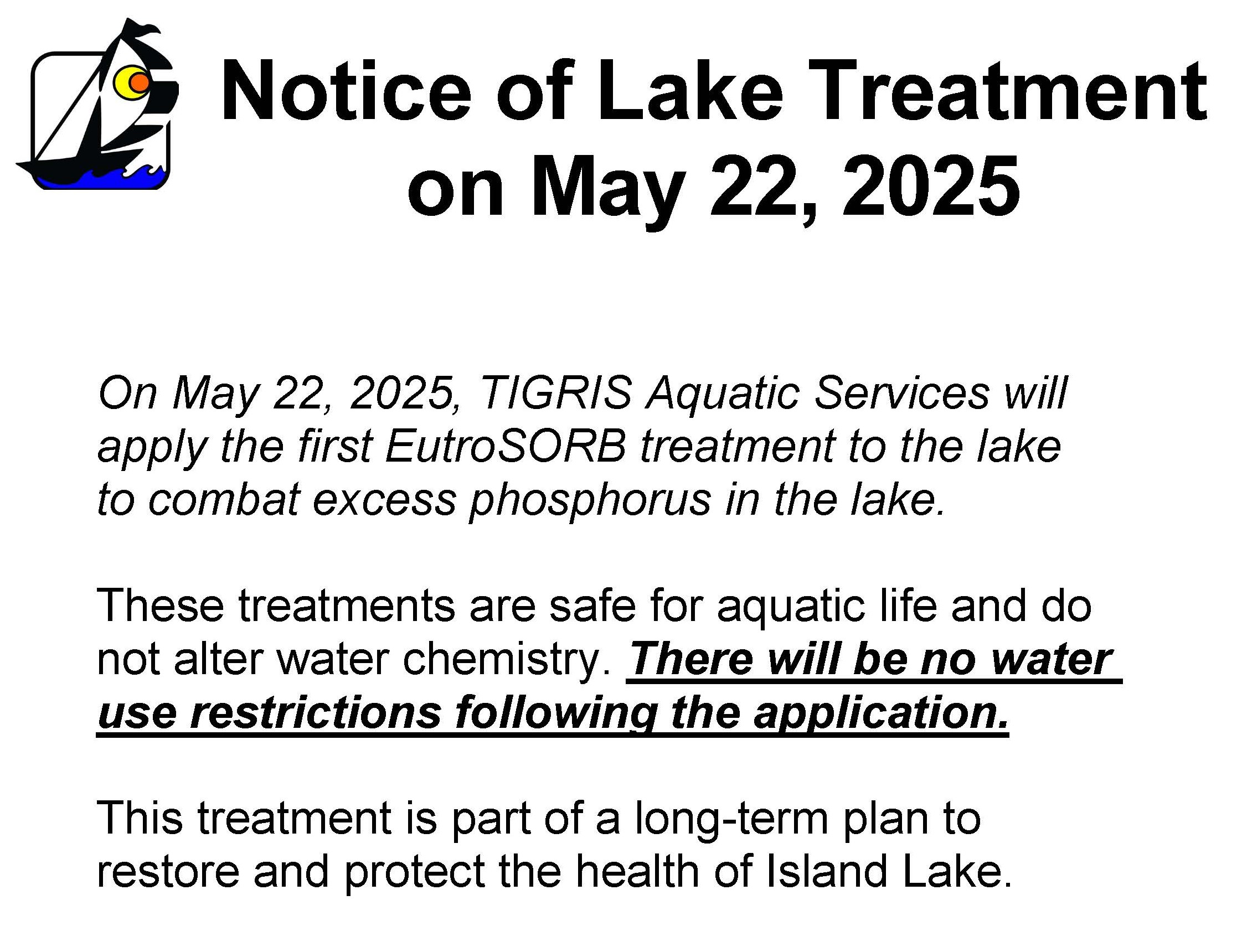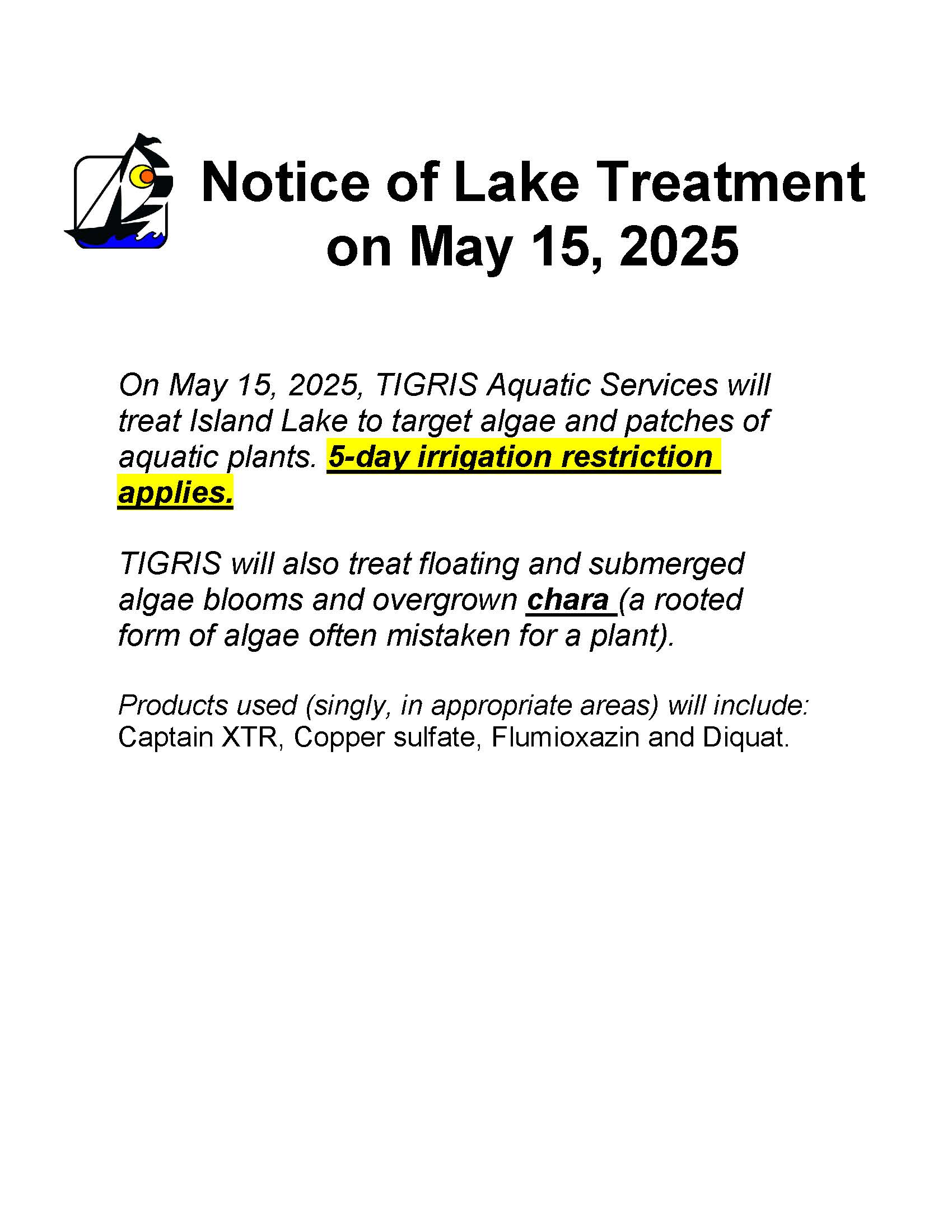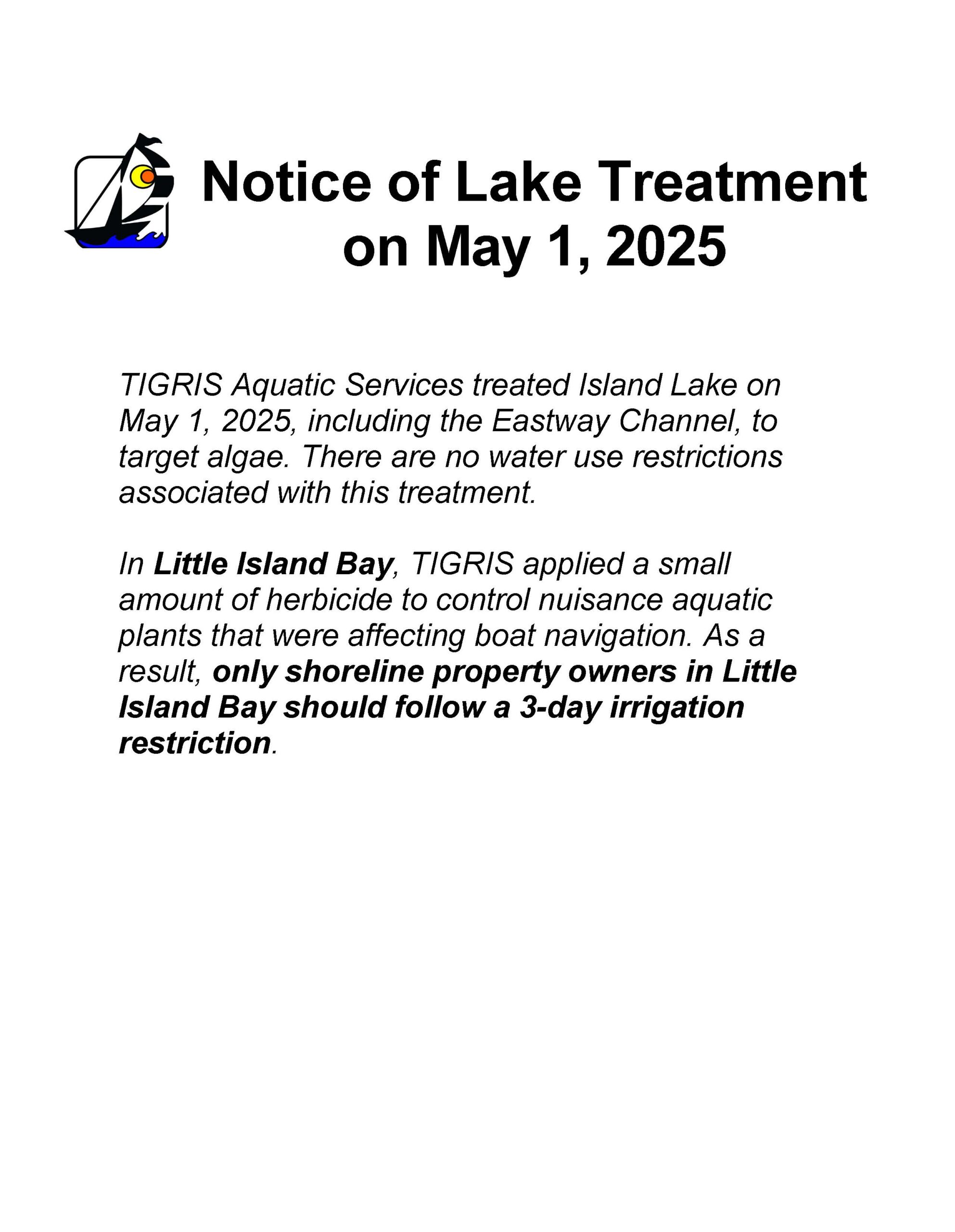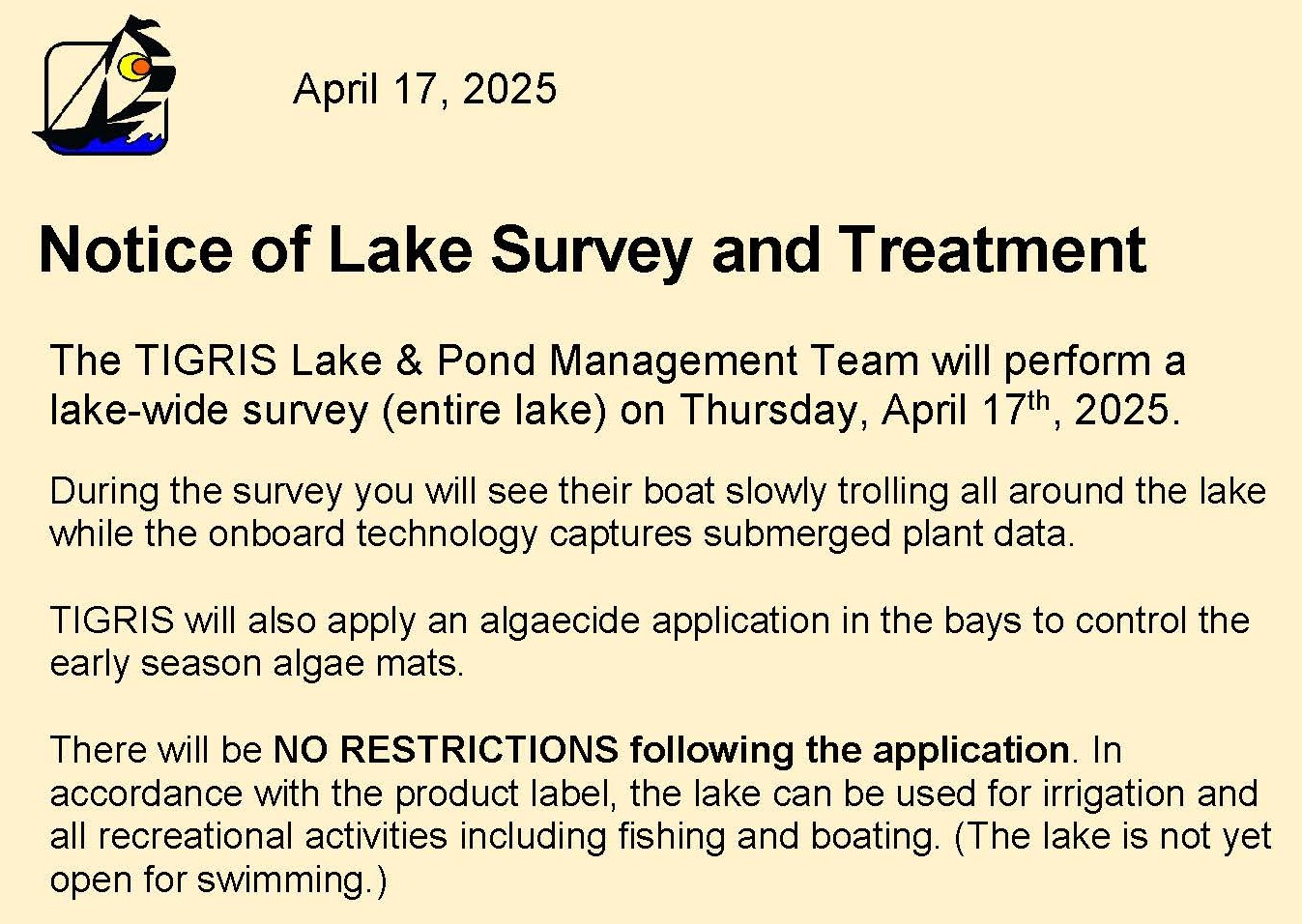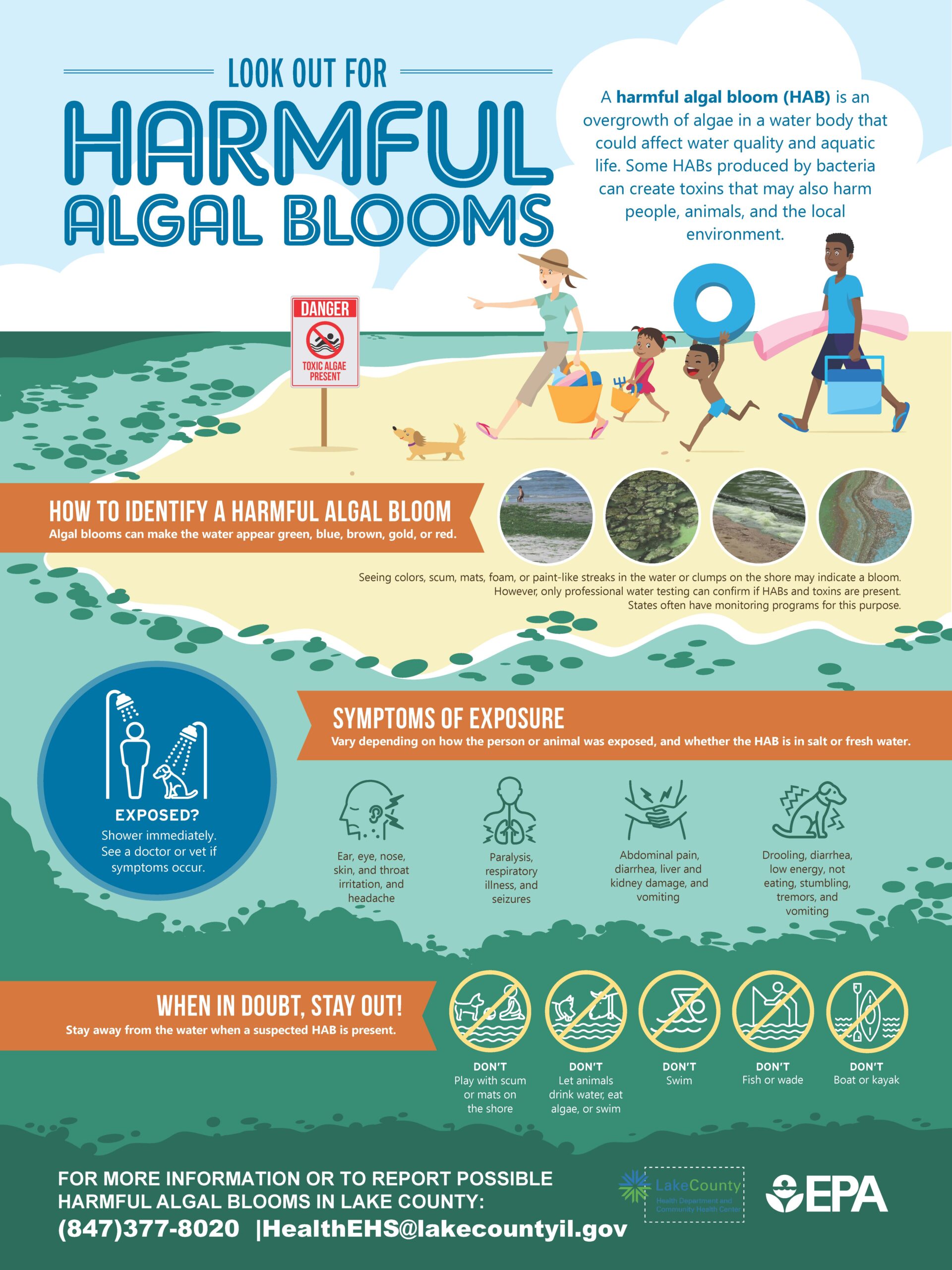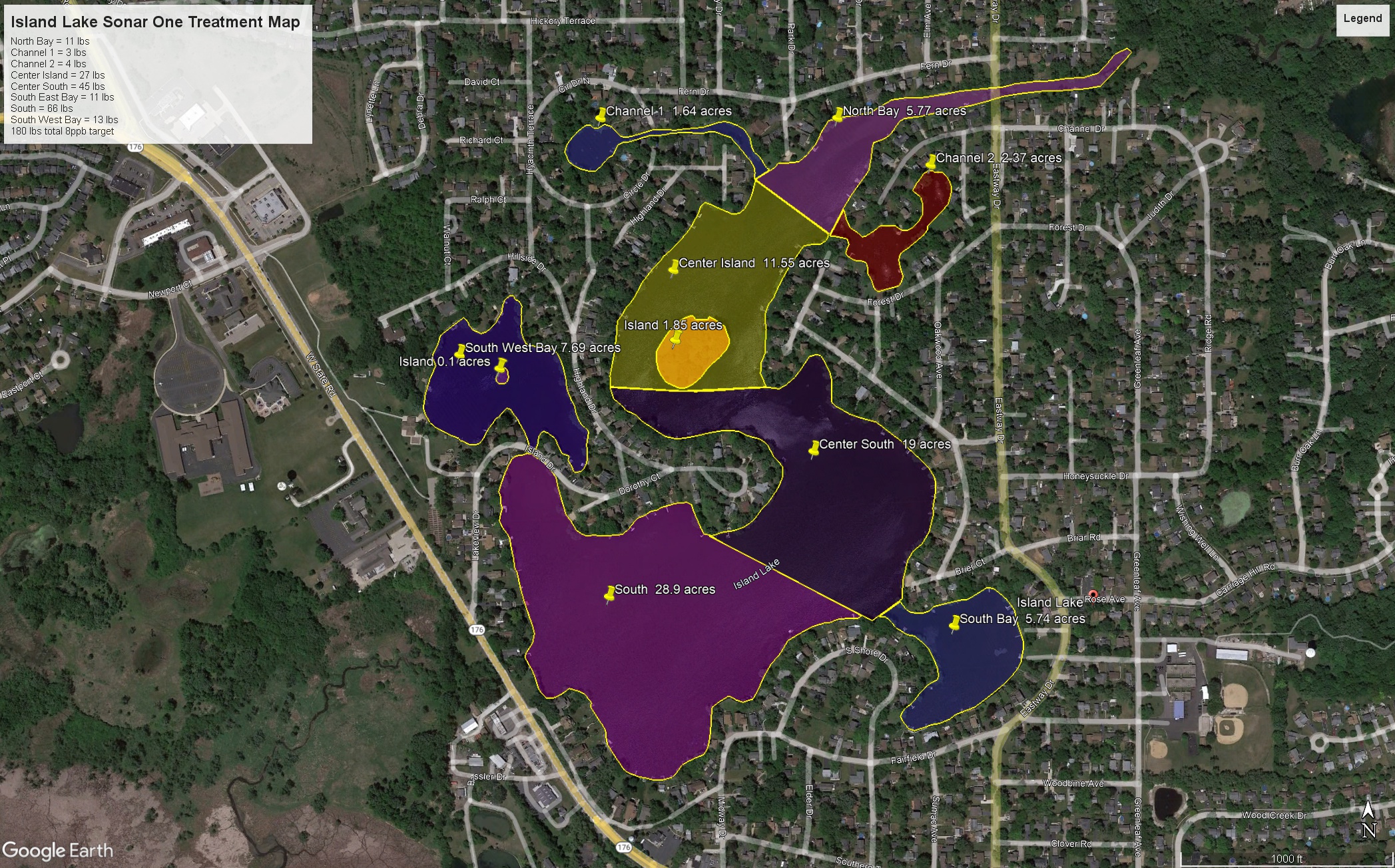Lake
Lake County Health Department Informational HAB_Poster
SeClear_Label 6-19-24 Treatment
07-16-2024 Eastway Park (Village of Island Lake) Algae Control Visit 1B…
7-12-2024 Lake Treatment Notice
7-02-2024 Lake Treatment Notice
06-12-2024 Island Lake 2024 Lake Treatment FasTest #3
4-5-2024 Lake Treatment Notice
4-25-2023 Lake Treatment Notice
04-25-2023 Island Lake Early Spring Herbicide Visit 1
ALL RESIDENTS OF ISLAND LAKE, OWNERS AND RENTERS, HAVE LAKE RIGHTS
Preserve Water Quality. Use Phosphorus-Free Fertilizers.
Approximately 14% of approx. 29 square miles of the Island Lake watershed can be characterized as disturbed, areas where stormwater crosses impervious surfaces and pick up phosphorous, among other pollutants. Sediments wash into streams and out into the Lake, bringing phosphorus attached to the soil particles.One way to help stop this transfer of phosphorus into the Lake is to stop the sources of it, such as using a lake-friendly fertilizer that does not contain phosphorus.
Phosphorus-Free Fertilizer: What do I look for?
The three numbers in fertilizer bags show the N-P-K nutrient analysis. The middle number is the phosphate (phosphorus) content. A “zero” in the middle means it is phosphorus-free.
Will phosphorus-free fertilizer keep my lawn green and healthy?
Yes! Soils in most parts of Island Lake already have an adequate amount of phosphorus to grow a healthy lawn. In these instances, adding more phosphorus with fertilizer is not needed and will not benefit your lawn.
What else can you do to protect water quality besides using a phosphorus-free fertilizer on your lawn?
Fertilizers, leaves, grass clippings, animal waste, and eroded soil are all sources of phosphorus. When they are swept or washed into the street or nearest storm drain, they end up in your local lake or river. Please bag them or place them in an area where they won’t be swept into the street or nearby stream.
You can do your part to protect water quality by doing the following:
- Apply fertilizer at the recommended rate.
- Fall is the best time to apply for good results.
- Don’t fertilize before a storm.
- Never apply to frozen ground.
- Yard waste can contribute significant amounts of phosphorus to waterways. Keep soil, leaves, and lawn clippings out of the street, ditches, storm drains, and stream by bagging them, composting them, or leaving them right on the lawn as a natural fertilizer.
- Mow higher. Keeping your grass length to 2½ – 3 inches is healthier for your lawn and means you can mow less often!
- Pick up pet waste. Pet waste can contain harmful bacteria as well as phosphorus. Recycle it with your Yard waste or place in the garbage.
Control soil erosion around your house. When left bare, soil is easily washed away with rain carrying phosphorus with it. Soil erosion can be prevented by covering exposed soil with vegetation or mulch.
Provided by the Island Lake, Lake Management Committee
Focusing on the health, viability and enhancement of Island Lake for future generations.


